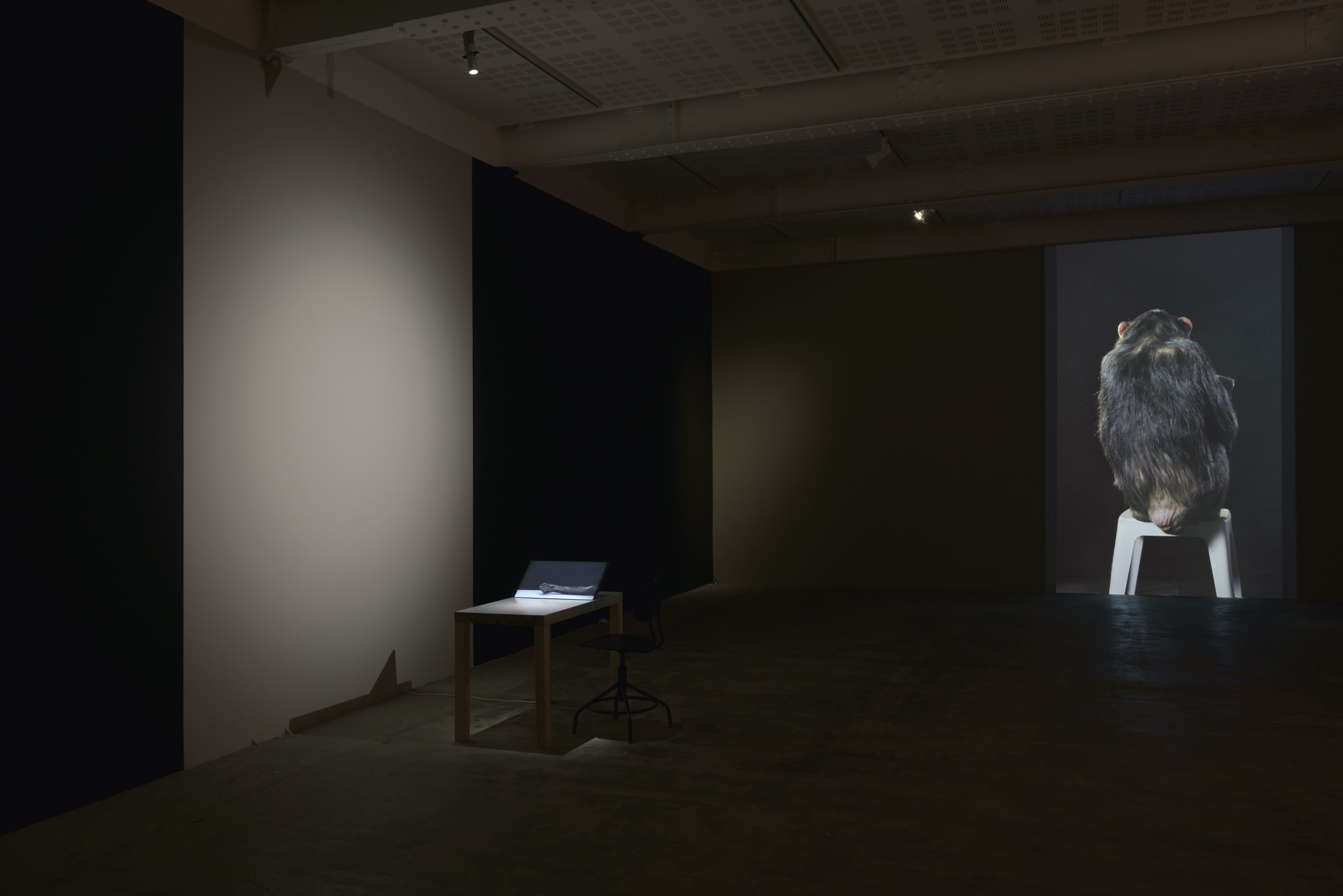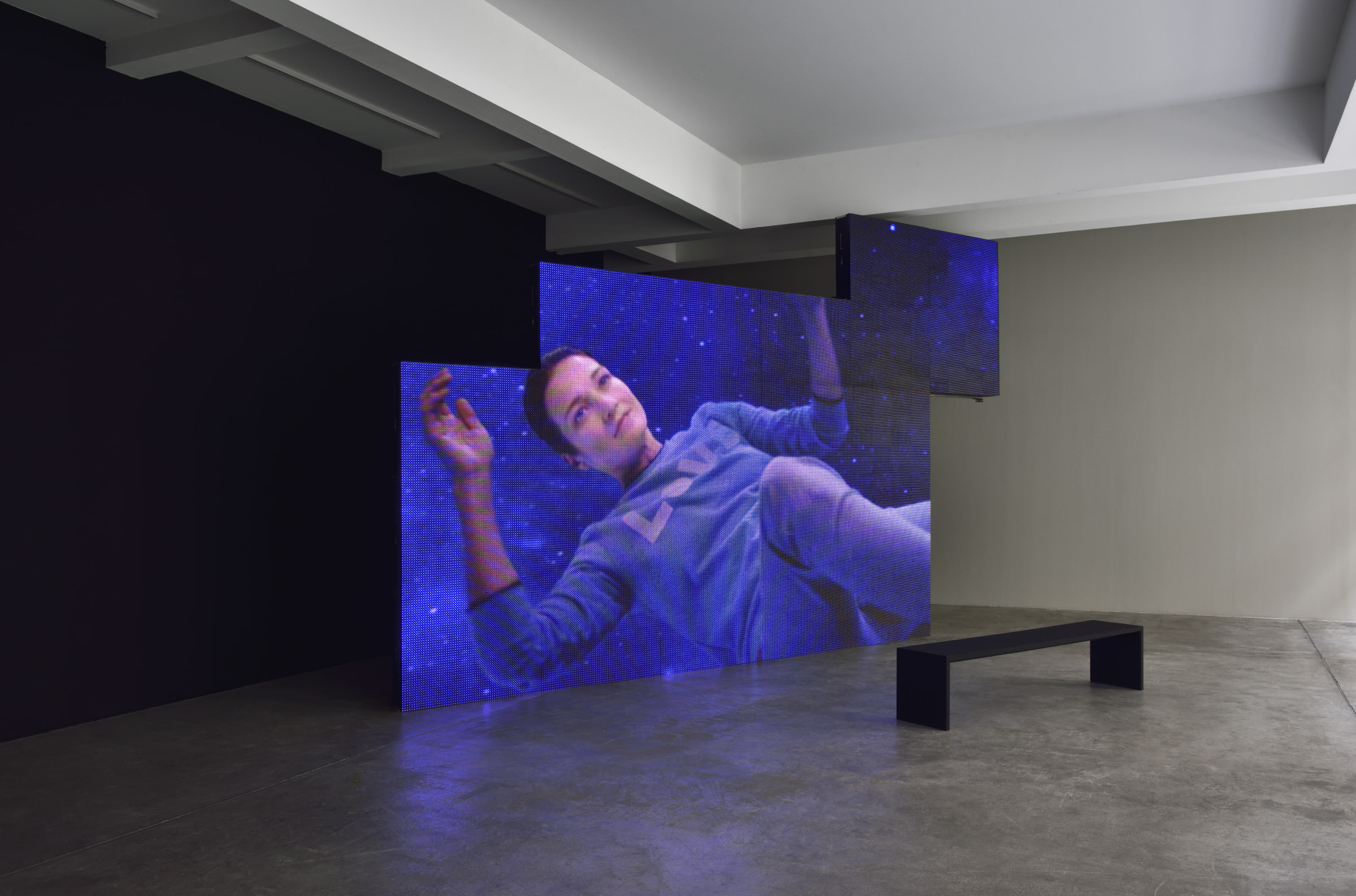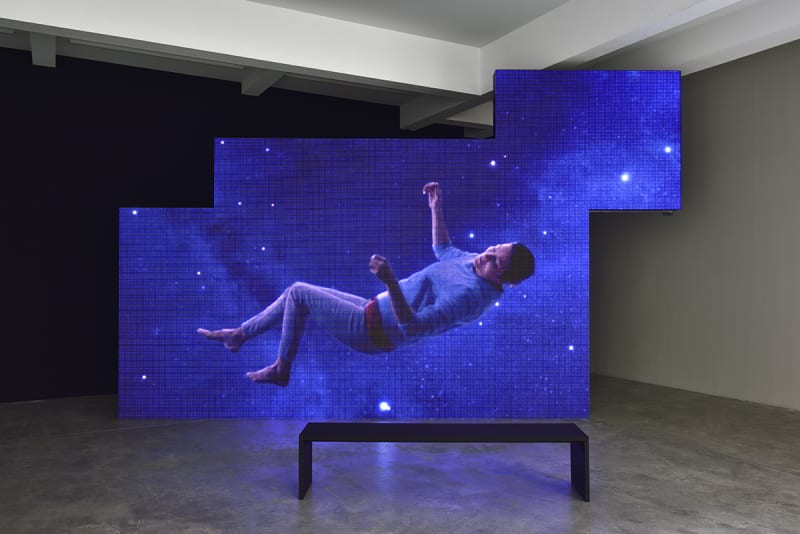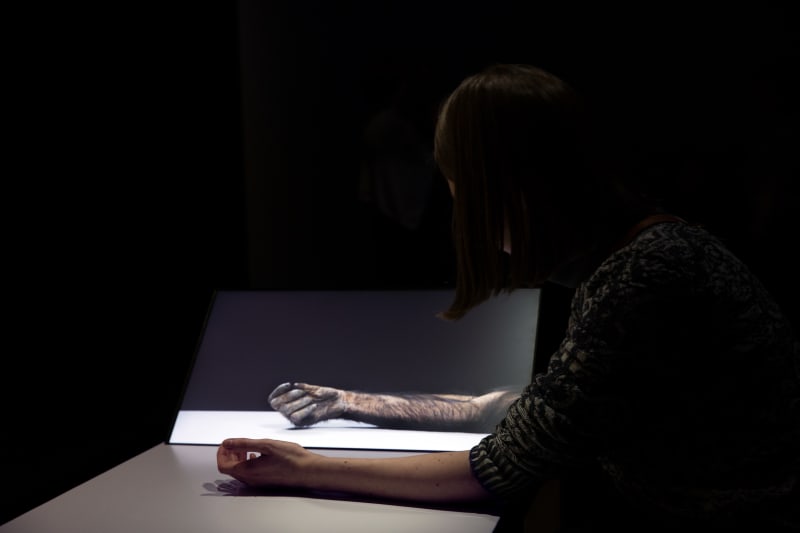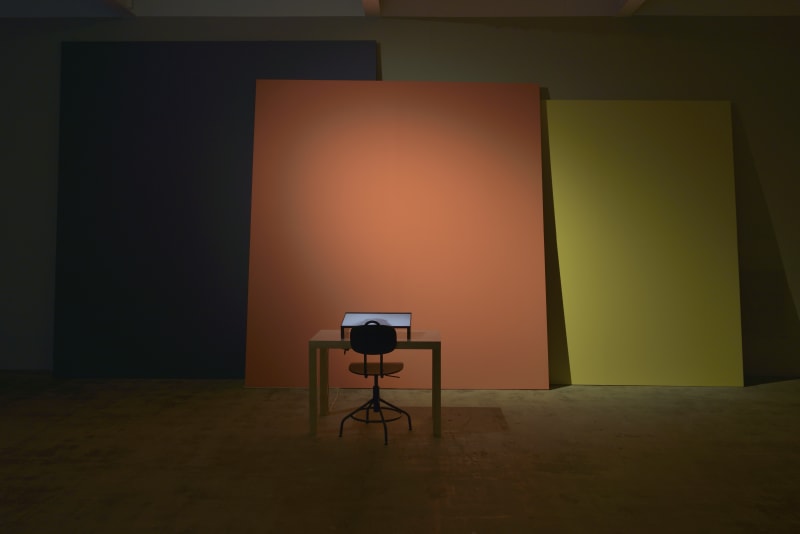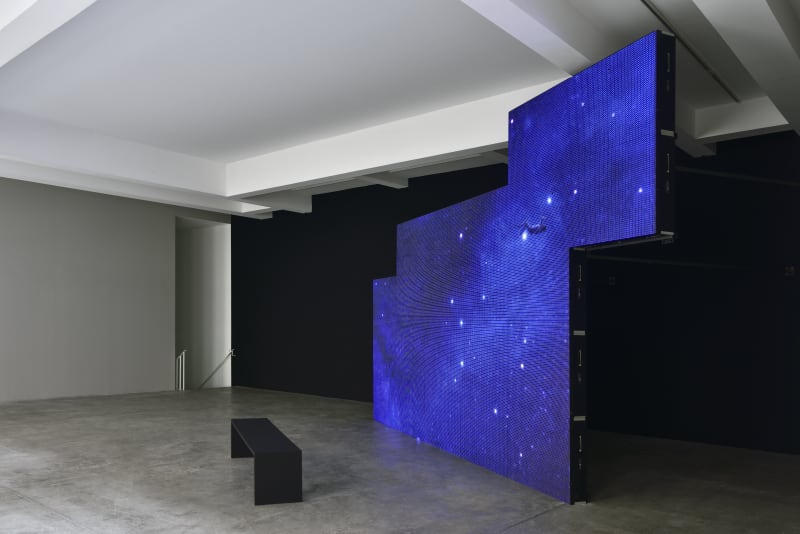Overview
The Marian Goodman Gallery in Paris is pleased to present a new exhibition by Eija-Liisa Ahtila. The Finnish artist shows her latest multi-faceted work entitled Potentiality for Love (2018), in four parts dispersed between the two levels of the gallery.
Eija-Liisa Ahtila: Potentiality for Love
2 March – 11 April 2018
Opening Reception: Friday 2 March, 6-8 pm
“ ‘The human’ is achieved by escaping or repressing not just its animal origins in nature, the biological, and the evolutionary, but more generally by transcending the bonds of materiality and embodiment altogether.” Cary Wolfe, What is Posthumanism?, University of Minnesota Press, 2009, citation selected by E.-L. Ahtila
The Marian Goodman Gallery in Paris is pleased to present a new exhibition by Eija-Liisa Ahtila. The Finnish artist shows her latest multi-faceted work entitled Potentiality for Love (2018), in four parts dispersed between the two levels of the gallery.
On the ground floor, one part of the work combines the moving image with a sculptural aspect achieved by superimposing of twenty-two LED modules. Ahtila deliberately chose an out-of-date technology to make the image unclear and abstract when viewed up close, but intelligible from a certain distance. One can distinguish from afar a female human figure floating weightless in the Milky Way. As she comes near, she takes on monumental proportions and ends up gesturing silently toward the viewers as if to welcome them in good will.
Ahtila uses this giant, universal embrace to evoke the maternal bond linking two human being from the beginning of life and the point when love is born. This experience stirs the memory of archaic unity as well as nostalgia stemming from its disappearance. The artist believes that through this primal connection we are all imprinted with a paradoxical experience of fusion and otherness. The memory of unity reactivates the desire to recreate an equally intimate sense of proximity with other loved ones; this latent desire remains at the state of potentiality.
Ahtila takes this idea to an even more global dimension: what is humanity’s potential for empathy not only itself but also toward other species? Is our capacity for love limited, or can it encompass every living being? The artist invites us to reevaluate our own relationship to the environment, to its resources, and to the life that populates it.
The elements of the exhibition presented in the lower level of the gallery extend this reflection and offer an unsettling experience. An oversized projection in the back of the room shows a silent image of Jenny, a female chimpanzee, seen from the back as she sits on top of on a stool. She seems to pay no attention to the person watching her. She maintains privacy impervious to the human gaze even while she occasionally glances over her shoulder. Her composure, somewhere between modesty and aloofness, serves to underscore the position of the viewer who has now become a voyeur. This raises a series of questions about our own animality and whether alterity is built on an equal footing. Ahtila wonders: what are the driving forces behind the existing division between “us” and “them”?
Lastly, two sculptures offer an utterly novel experience. Eija-Liisa Ahtila relies on knowledge acquired through research in neuroscience and in therapies designed to relieve patients suffering from phantom limb pain. The strategy of these techniques is to fool our perception and our brains. Ahtila placed two LED monitors on wooden tables the way mirrors would be set up in a conventional therapeutic setting. At the first table, the viewer is seated in such a way that his or her right forearm is hidden by the monitor. The viewer’s left hand remains visible and may mimic the movements performed on the screen. At a certain point, one nearly ends up forgetting about the hidden limb, accepting the image on the monitor as a new reality, a kind of digital graft. The second table conjures up another experience by masking both our hands while our attention is focused exclusively on the image on the screen. Once again, there emerges an unlikely extension of the self that challenges the distinction between humans and animals.
Since 2005, Eija-Liisa Ahtila has been working on themes related to the issues of eco-cinema and ecological drama, that is, how to understand, create and mediate the world in light of global warming, the extinction of species, and exhaustion of natural resources.
Potentiality for Love is thus highly topical and refreshingly relevant. Without being prescriptive, the artist’s point of view firmly cuts across disciplines, questioning the place of humans in their natural, social, and geopolitical environment at a time when these themes ever more urgently demand a response. First shown at the Serlachius Museum in Finland in early February 2018, Potentiality for Love will also be presented as part of the 21st Biennale of Sydney from May 16 to June 11, 2018, and later at the M-Museum in Leuven, Belgium, between May 18 and September 16, 2018.
ABOUT THE ARTIST
Eija-Liisa Ahtila was born in 1959 in Hämeenlinna, Finland. She studied art at the London College of Printing and at the University of California Los Angeles (UCLA). Her latest work Ecology of Drama was featured in turn at the Australian Centre for the Moving Image (ACMI) in Melbourne; at the Albright Knox Art Gallery in Buffalo, NY; at the Marian Goodman Gallery in New York; at the Museo de Arte Contemporáneo in A Coruña. The film version of the same work premiered at ‘Forum Expanded’ at the 67th Berlin International Film Festival in 2017.
Her work has been exhibited in numerous museums and foundations around the world, including, among others, the Guggenheim Museum in Bilbao; Oi Futuro in Rio de Janeiro; The Israel Museum in Jerusalem; the Lehmbruck Museum in Duisburg; the Kiasma Museum of Contemporary Art in Helsinki; Moderna Museet in Stockholm; DHC/Art Foundation for Contemporary Art in Montreal; The K21, Kunstsammlung Nordrhein-Westfalen in Düsseldorf; the Museum of Modern Art in New York; Parasol unit foundation for contemporary art in London; Museo d’Arte Moderna e Contemporanea in Bolzano; the Dallas Museum of Art; and the Kunsthalle Zürich. In France, Jeu de Paume held a retrospective of the artist’s work in 2008, and the Carré d’art - Musée d’art contemporain in Nîmes featured a large solo exhibition in 2012.
Press contact: Raphaële Coutant raphaele@mariangoodman.com or +33 (0)1 48 04 70 52

